Despite the obstacles caused by the spread of the novel coronavirus, Tokyo Tech's Summer Challenge, a unique opportunity for high school students to participate in university-level education while engaging with some of the world's top researchers, was held for the seventeenth straight year on September 12 and 13.
Traditionally, Summer Challenge participants go to Ranzan Town in Saitama Prefecture for a three-day-two-night camp, where they face a variety of scientific and technological challenges. Close contact in large numbers was not an option this year, but organizers were still keen to provide students with a valuable experience while maintaining appropriate safety measures. As a result, Summer Challenge 2020, which consisted of three challenges, took place on Ookayama Campus over two days. Lecturers at the Tokyo Tech Lecture Theatre connected virtually with nine small groups — 52 participants in total — who were spread across campus in different lecture rooms.
This was the first time to conduct the event virtually. While minor technical difficulties did occur, the new format also revealed certain positive, unforeseen aspects. Many students felt that the private group space allowed them to focus more on the task at hand, and enhanced their ability to exercise creativity and build teamwork skills, two central objectives of the Summer Challenge.
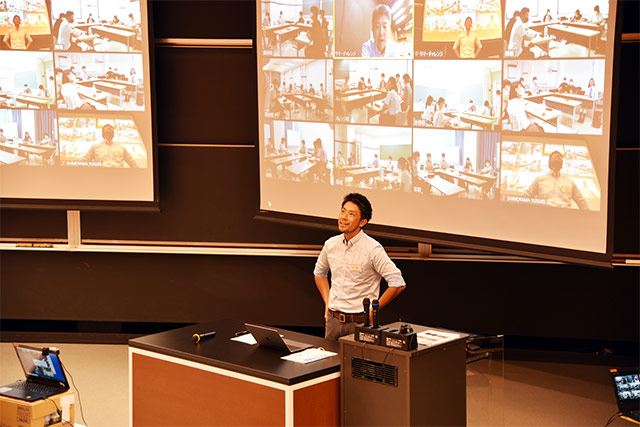
Nine groups connected with lecturers via Zoom
Challenge 1: Understanding the mysterious nature of CO2
Professor Yusuke Shimoyama
Department of Chemical Science and Engineering, School of Materials and Chemical Technology
Typically, people think of the three states of matter as solid, liquid, and gas. In case of CO2, these states are represented by dry ice, liquefied carbon dioxide, and the bubbles in your carbonated beverage respectively. However, CO2 also has a supercritical state that does not fall under these categories. This state can be achieved by holding CO2 above a temperature of 40℃ and a pressure of over 72.8 atm. The first task for the students was to express as a diagram the movement of CO2 molecules in this supercritical state.
Supercritical CO2 can slowly dissolving other solids. By applying this mysterious property, we can, for example, extract the citrus oil component from the eucalyptus leaves eaten by koalas. By introducing actual uses of supercritical CO2, Professor Shimoyama led the participants into their next task — brainstorming and suggesting ways in which CO2 could be used in dyeing processes. Water is a precious resource, and dyeing can consume lots of industrial water — water which could be saved for other purposes.
The objective was to not only examine a new type of matter, but also to focus how related technologies can benefit society. To emphasize this, all students were encouraged to step into the shoes of dyeing plant designers. If we attach a valve here, will it prevent backflow? What kinds of measures can we apply to protect the cloth being dyed? Students created plant designs in groups and then shared their ideas with other participants. During the presentations, a constant stream of questions flowing in from other participants created an open environment for learning about the mysteries of CO2.
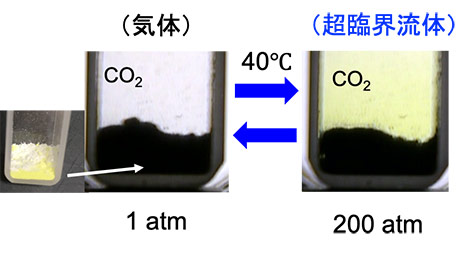
Diagram of supercritical fluid
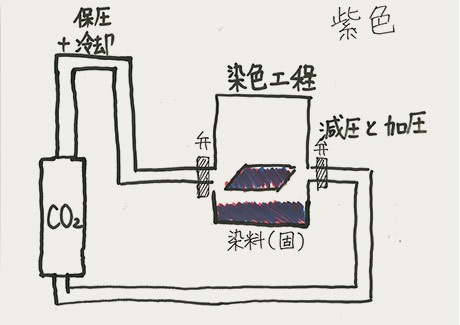
Diagram of dyeing plant conceived by students
High school teacher's comment:
"The session offered a wide range of perspectives, from the physical origins of the nature of CO2 to practical and industrial uses such as the dyeing process."
Challenge 2: Making Earth levitate
Professor Akira Chiba
Department of Electrical and Electronic Engineering, School of Engineering
The second challenge of 2020 was all about magnetic levitation — the use of magnetic forces to gently make an object float in the air. A contemporary example of this is the maglev train, which utilizes superconducting magnets and various types of coils to keep it afloat above the track as it travels at high speeds. The first task for students was to examine this mechanism more closely.
To help explain the main points of the technology, Professor Chiba used some of the teaching material he had compiled for the Tokyo Tech MOOC on introductory electrical and electronic engineering . During the breaks in the lecture, students engaged in short quizzes and discussions to deepen their understanding.
. During the breaks in the lecture, students engaged in short quizzes and discussions to deepen their understanding.
Once the mechanism had been explained, it was time for an experiment. Each group was given a globe about 15 cm in diameter together with a base below it. The aim was to manipulate the globe and get it to levitate above the base. Each individual was given 60 seconds to achieve this. There were plenty of tumbling planets at first, but as participants began to understand the significance of the lights on the base and the magnetic forces at work, the globes began to stabilize and float. Students also observed that if they then gave the globe a gentle nudge, it began to spin silently on its axis.
The last task was to illustrate how this worked. How would the globe react if tilted or poked? How could the apparatus be modified to make the globe levitate more easily? These were just some of the final questions that encouraged students to pursue further experimentation and problem solving.
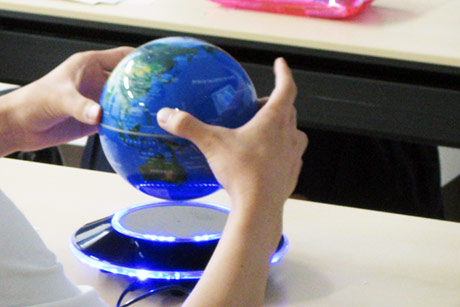
Who can make Earth levitate?
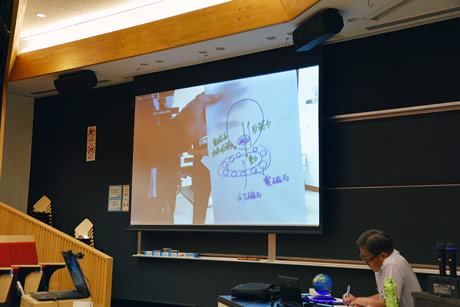
Sharing hypotheses and opinions virtually
High school teacher's comment:
"The challenge dealt with many concrete aspects such as the planned maglev train and new linear motors, and the students were extremely enthusiastic and attentive."
Challenge 3: Forefront of right triangles
Associate Professor Masatoshi Suzuki
Department of Mathematics, School of Science
After words of encouragement from Tokyo Tech Executive Vice President for Education Tetsuya Mizumoto at the start of Day Two, students dived into their third challenge.
Today, we are going to climb this mountain together, Associate Professor Suzuki began. "Up to similitude, there exists a unique pair of a rational right triangle and a rational isosceles triangle which have the same perimeter and the same area." That is the theorem, and this theorem was just proved by two young Japanese mathematicians in 2019. Let's follow their trail and conquer this mathematical mountain together!
All you need to do is stick to a few steps to reach the peak. First, find the intersection of this straight line and this circle. The triangles you are seeking and the rational points of this curve are closely related. Why do you think that is so? You can find a total of eight rational points on the curve determined by this formula. Go!
Oh, and by the way, I am sure you can solve this in 10 minutes. You need a good idea to solve this, so I will give you 20! As the students puzzled over the conundrum, Suzuki dropped in on each of the groups to see how they were doing. Some needed a few hints, others looked to be well on their way to finding the solution.
While many may have had the impression that mathematics is a dark, lonely road, this activity was a fresh experience that allowed participants to attempt a contemporary mathematical challenge through lively discussion and teamwork. Thanks to carefully planned and executed guidance by the organizers, the mountain of the unique pair of triangles was conquered.
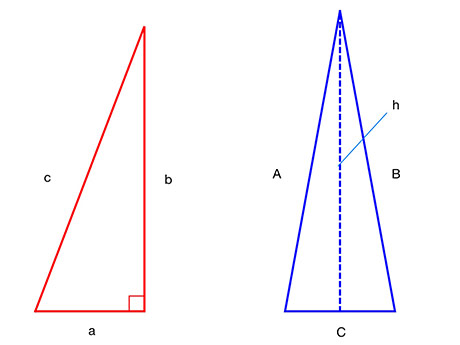
Challenge 3: Unique pair of triangles
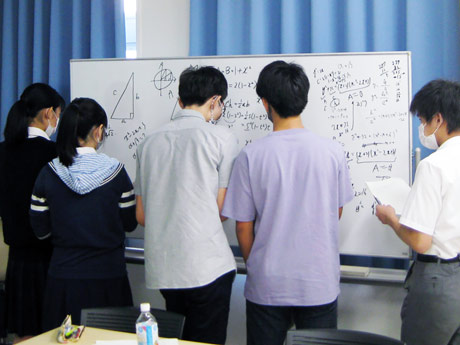
Hard at work on triangle challenge
High school teacher's comment:
"Unexpected problems with familiar triangles drew in the students, and it was a well-balanced lecture that really made the students think."
Comments from participants
- The participants were all divided into groups, and I think that helped increase team awareness. We sat in a U-shape which made it easy to talk to one another.
- It was good to be an environment where we could hear the voices of all the members of the group while maintaining social distancing.
- There were times when the connection cut off and we could not hear each other.
- Being connected to other classrooms via Zoom and feeling the atmosphere among other groups was great.
. Any information published on this site will be valid in relation to Science Tokyo.









